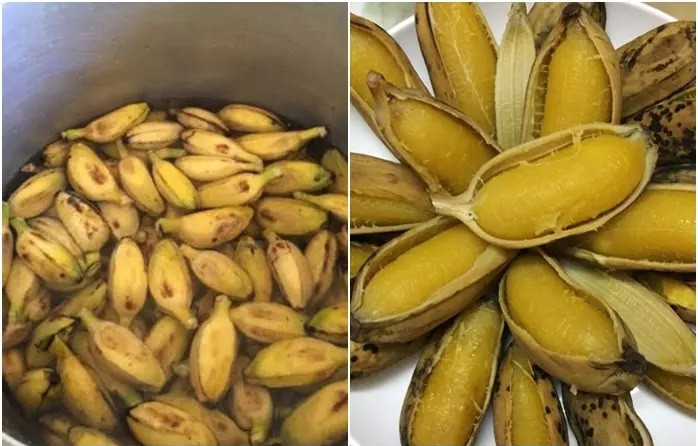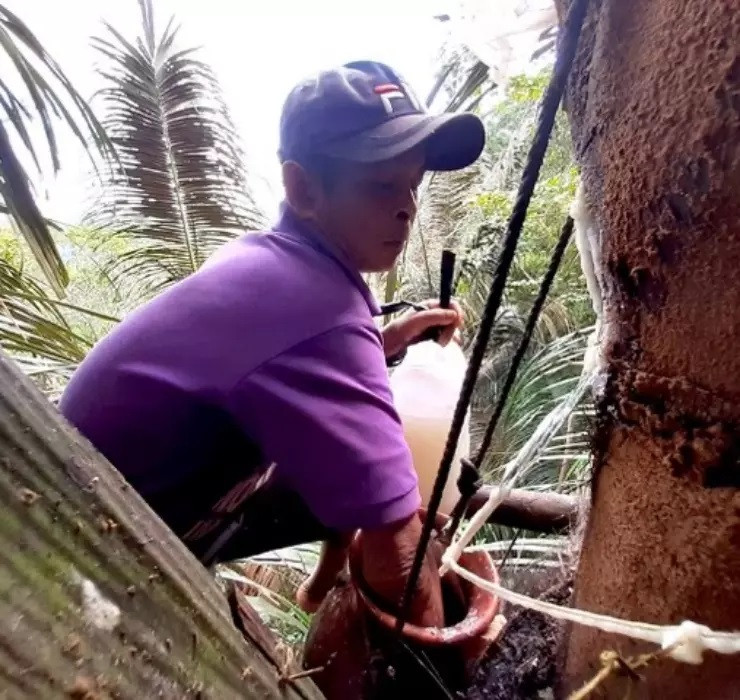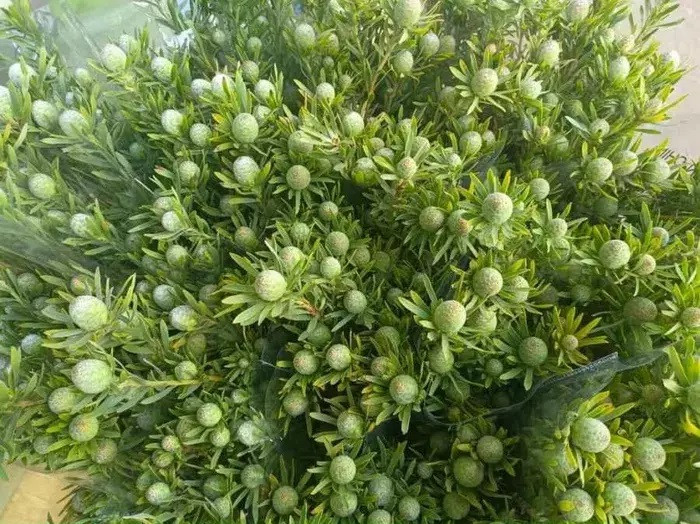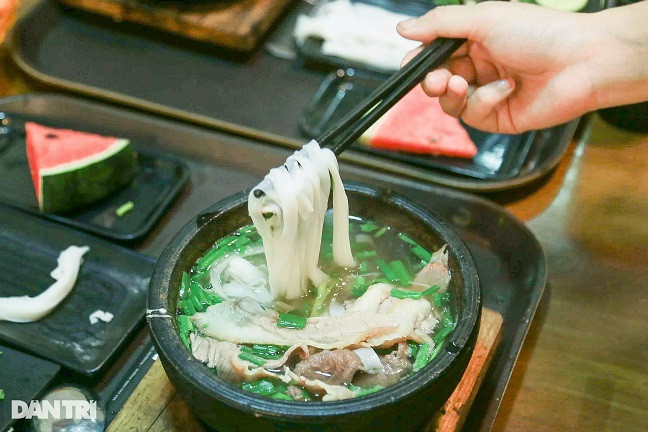A strange banana: best when boiled or grilled

According to Ms. Minh, a greengrocer in Me Tri (Hanoi), Vietnamese plantain is a delicacy of the southwest region. The fruit is small and thick, which shares some resemblances to envoy banana. There are two types of Vietnamese plantain: white and turmeric. The turmeric version is considered more glutinous and tastier than its white version.
"The plantain's uniqueness is irresistible among tourists due to the requirement of cooking (boiling, grilling or steaming). Only then will the plantain's sugar be concentrated in the middle, making the fruit both fragrant and rich. When eaten, it leaves a chunky feeling and yet the flesh has a soft texture" Ms. Minh said.
Sweet passion fruits sell like hot cakes
At the recent representative produce exhibit organized by HCM City Farmers' Union, many exotic plants attracted people's attention. One was Mr. Sau Cong’s (a farmer in Soc Trang) sweet passion fruit, with an estimated price of 110,000 VND/kg, 4-5 times more expensive than the average passion fruit and always out of stock.
Mr. Sau Cong said that after over 3 years of experimenting, multiple extractions, and selections, he finally succeeded in creating the sweet passion fruit plant, which is a hybrid of Colombian passion fruit and longan, with an exceptional aroma and high nutritional value.
Bizarre jobs: brewing liquor in trees, climbing durian trees

Tree growing is no longer just about produce and wood. in Vietnam, you can make a living by brewing liquor inside trees like a special liquor made with the Doak tree.
The townspeople of Dak Plinh, Kong Chro, Gia Lai say to make this drink they choose trees that have a lifespan of over 15 years. The distance from the tree to the stream is also a definite element. The ideal distance for best result is around 30m. When correctly harvested, the trees will produce a white liquid, with a pungent taste, strong aroma and causing no intoxication for the drinker.
Phong Dien District (Can Tho City) is in the heat of the durian harvest. This year durian's yield had increased compared to the same period the previous year. The more the durians, the busier the durian "knockers" (or cutters).
What makes the "knockers" so talented is their ability to assess the age of the fruit from the moment the fruits have yet to exude any fragrance. At residential gardens, the daily earnings of a durian "knocker" ranges from VND1-3 million. The salary paid for durian "knocking" is high, but few can keep up with the job.
Three types of unusual branches make a hit

In addition to traditional flowers, consumers are also on the hunt for unique indoor decorative branches that last for up to a month. In particular, imported stone pine is the most unusual branch on the flower market today. Priced from VND130,000-150,000/bundle, with a durability of 15-30 days, this type of branch is considered to be a super saver for flower enthusiasts.
Besides stone pine, plum branches from Moc Chau also appear in the flower market in Hanoi, priced cheaply from only a few dozens to several hundred thousand VND/bundle. The plum branch has both fruit and young leaves.
At the end of 2021, the market saw a "craze" for planting forest cherry branches. Fancy forest cherry branches were sold in bundles for only 120,000 VND. Forest cherry branches are popular because of their slender shape, and when planted, they exude the wild look of nature, not drying like many other flowers.
Saltwater chicken: a rare specialty in Phu Yen
The Longhorn cowfish, also known as "metal-armored fish" or "saltwater chicken", is one of the rare fish in Phu Yen. According to Dan Viet newspaper, with a sturdy skeleton under the black speckled skin, this "saltwater chicken" has a chewy, juicy taste and fragrant meat and has become a seafood lover’s favorite.
The fish grow very slowly. To reach a weight of about 1kg, the fish takes about 3-5 years, so the bigger the fish, the higher the price. This is a rare and expensive specialty among fish caught in Phu Yen. Fresh cowfish is being sold at fishmongers for 1,3-2,5 million VND/kg.
Hanoi's Pho restaurant heats stone bowls to 300oC, customers “do it themselves”

The owner of this pho restaurant is Ms. Chu Phuong Linh. To differ from famous and long-standing pho restaurants in Hanoi, Linh decided to use stone bowls. "Normal pho bowls will cool down, but stone noodle soup will be hot until diners finish enjoying it. This makes the bowl of pho fresh, hot, and more unique," Ms. Linh said.
The process of making a bowl of stone noodle soup goes through many different steps. The recipe for pho broth was made by Ms. Linh according to an "hereditary secret". The pho used at the restaurant is made exclusively by manual coating method.
The stone bowls were ordered by Ms. Linh from Binh Dinh and meticulously transported to Ha Noi. For the stone bowls to retain heat for a long time, the owner bakes them on a gas stove at a temperature of up to three hundred degrees Celsius, then pours boiling noodle soup into it and immediately brings it out to diners.
To enjoy this dish to the fullest, when the staff brings it out, diners immediately put the meat in the bowl, and adjust how done the beef is according to their preferences.
Hanh Nguyen